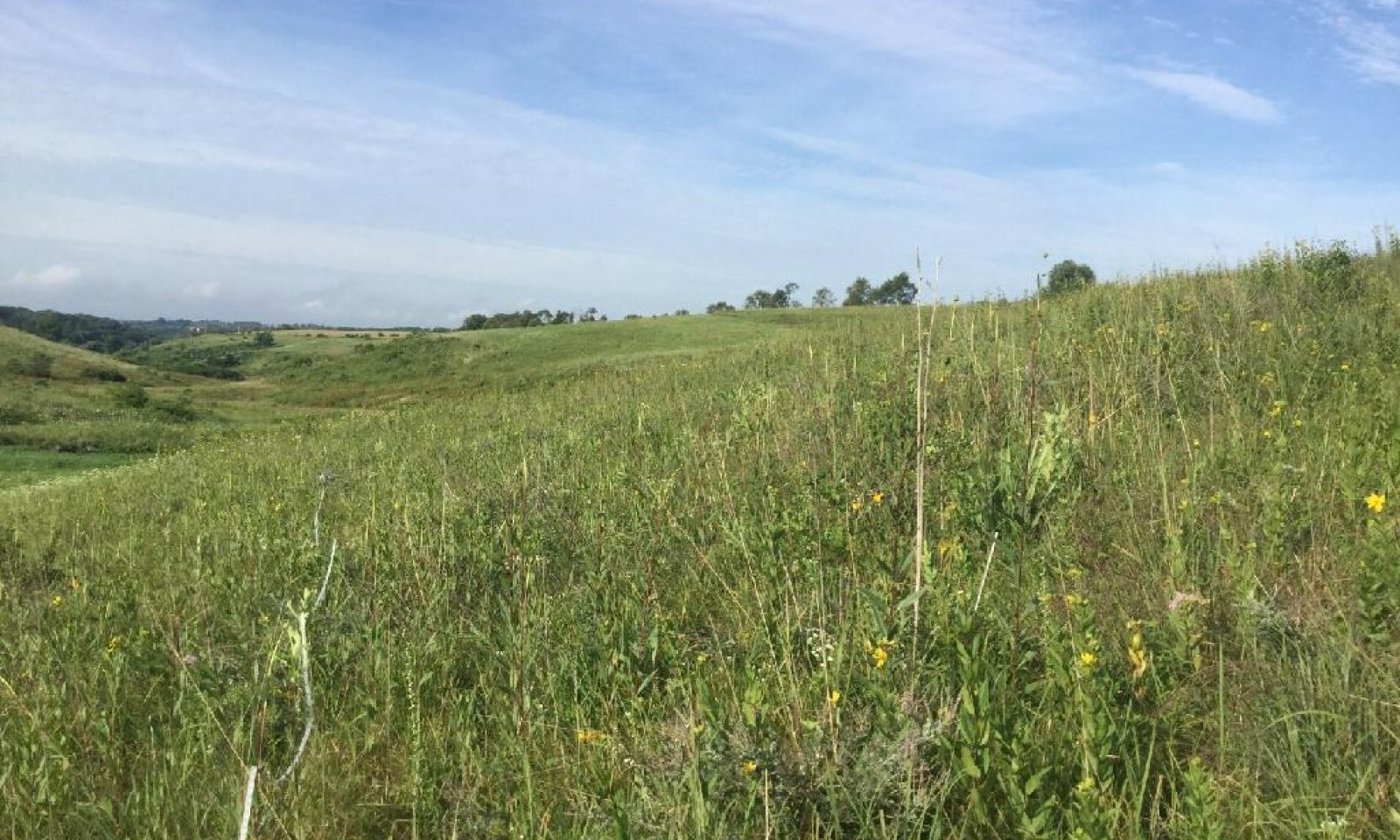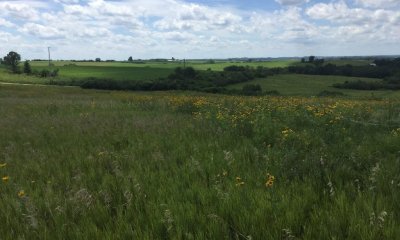
Shallow Mollic Loamy-Silty Upland
Scenario model
Current ecosystem state
Select a state
Management practices/drivers
Select a transition or restoration pathway
-
Transition T1A
Suppression of fire.
More details -
Restoration pathway R2A
Return of fire and/or large grazers to the landscape
More details -
Transition T2A
Continued fire suppression for over 20 years
More details -
Transition T2B
Removal of forest/shrub cover and tilling for agricultural crop production.
More details -
Transition T3A
Cutting, fire, or blowdown removing existing tree canopy
More details -
Restoration pathway R4A
Low intensity moderate return interval fire removing fire intolerant species and regeneration
More details -
Restoration pathway R4B
Deciduous forest community is slowly invaded by conifers.
More details -
Transition T5A
Removal of forest/shrub cover and tilling for agricultural crop production.
More details -
No transition or restoration pathway between the selected states has been described
Target ecosystem state
Select a state
Description
The Reference State is a grassland state dominated by big bluestem, but also includes Indian grass, and little bluestem. Leadplant and sunflowers are common. The reference state for this ES is very rare today and was maintained by frequent fire removing the encroachment of tree and shrub species.
Submodel
Description
A mostly open grassland with sporadic shrubs and trees. As soon as fire is suppressed tree and shrub species invade this ES and various tree and shrub species may take hold resulting in a grassland with sparse and sporadic tree and shrub cover.
Submodel
Description
Stable Forest state is a forest community dominated by sugar maple (Acer saccharum) with American basswood (Tilia americana), and a mixture of Ashes (Fraxinus spp.), and Oaks (Quercus spp.). Depending on history of disturbance, two community phases can be distinguished largely by differences in dominance of tree species and community age structure. In some places sugar maple seed source may be missing leading to other dominant canopy species.
Submodel
Mechanism
Suppression of fire leading to the encroachment of wood species. Continued suppression for 10+ years required for the establishment of woody species.
Mechanism
Reintroduction of fire causing the mortality of encroaching trees and shrubs. This fire must then return at relatively short intervals to continue to suppress the growth of woody vegetation.
Mechanism
Continued fire suppression for several decades will lead to a dominant woody cover on the site.
Mechanism
Removal of forest/shrub cover and tilling for agricultural crop production.
Mechanism
Clear cutting with initial control of competing vegetation, or stand-replacing fire, prepare the site for occupancy by shade intolerant species. This may occur through natural regeneration or by planting.
Mechanism
Low intensity moderate return interval fire removing fire intolerant species and regeneration
Mechanism
Deciduous forest community is slowly invaded by conifers
Model keys
Briefcase
Add ecological sites and Major Land Resource Areas to your briefcase by clicking on the briefcase (![]() ) icon wherever it occurs. Drag and drop items to reorder. Cookies are used to store briefcase items between browsing sessions. Because of this, the number of items that can be added to your briefcase is limited, and briefcase items added on one device and browser cannot be accessed from another device or browser. Users who do not wish to place cookies on their devices should not use the briefcase tool. Briefcase cookies serve no other purpose than described here and are deleted whenever browsing history is cleared.
) icon wherever it occurs. Drag and drop items to reorder. Cookies are used to store briefcase items between browsing sessions. Because of this, the number of items that can be added to your briefcase is limited, and briefcase items added on one device and browser cannot be accessed from another device or browser. Users who do not wish to place cookies on their devices should not use the briefcase tool. Briefcase cookies serve no other purpose than described here and are deleted whenever browsing history is cleared.
Ecological sites
Major Land Resource Areas
The Ecosystem Dynamics Interpretive Tool is an information system framework developed by the USDA-ARS Jornada Experimental Range, USDA Natural Resources Conservation Service, and New Mexico State University.


